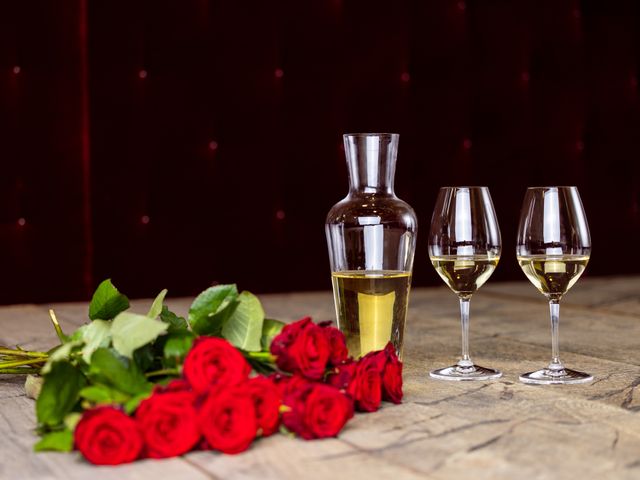Top 5 Wine Legends
Busting Wine Myths

As a wine lover, there are many simple things that you can do to get more out of your favourite wines. Our grape varietal specific glassware was designed on this principle: by using a glass made for a particular variety of wine, you’ll get a better balance of aroma and taste, leading to greater enjoyment. But there are also plenty of myths about wine that only serve to cause confusion for drinkers - so here we dispel five of these!

This myth is up first because it’s been hanging around for a long time – and it results in wine lovers missing out on a lot from their favourite bottles. To put it in an overly simplified way, any wine that benefits from ageing should be decanted.
Decanting has two benefits: decant older wines to remove sediment and gently let oxygen into the wine, or decant younger wines to drastically aerate it and essentially speed up the ageing process. Technically speaking, exposure to oxygen burns off carbon dioxide, which is the wine’s main preservation element. This allows the bouquet to develop faster, giving you the impression the wine is maturing.
Any complex wine, created by a winemaker to spend many years in the bottle before consumption, will show more aromatic expression and, ultimately, flavour, if decanted. This includes red wines, white wines that show body and integrity in ageing such as chardonnay or semillon, and even vintage champagnes.
So what doesn’t need decanting? Fresh, luscious, and low tannin wines that are not overly complex but are produced with the pure intention of being enjoyed soon after they’ve been released. These wines are typically fruit-forward, bright, juicy, and are absolutely delicious but won’t taste very different a year or two from now than they do today.

Myth #2: Wine warms up quicker in a stemless glass
As you probably know, glass is not a good conductor of heat. So imagine this: you are sitting outside on a warm summer day, holding a tumbler of cold white wine. If you’re sipping your wine and not cupping the bowl with both hands, it may take anywhere from 15-30 minutes to finish your glass, and it’ll be covered in condensation by the end. We can guarantee the last sip is not the same temperature as the first – but you can’t blame your tumbler if the air temperature is around or upwards of 25°C/77°F.
Here’s an interesting fact: a thinner glass will actually keep your beverage at its original cool temperature for longer. It seems counterintuitive but it’s true! The rate your wine warms is dependent on the temperature of three things: the air, the glass, and the wine.
When you pour cold wine into a room temperature glass, these two smaller elements will work on finding a median temperature based on the biggest element: air. The glass will cool as the wine heats and, as a thicker glass takes longer to cool down, your wine spends longer warming up. A thin-walled glass ensures a cooler drink from start to finish – regardless of whether it’s stemless or stemmed.

There is no arguing that some bottles of wine take more effort to produce than others, and that this effort costs money. Whether the grapes are selected by hand or by machine, the wine is stored in French oak barrels rather than adding oak chips to a steel tank, these time-consuming and sometimes pricey decisions undoubtedly impact on the cost of a bottle.
But if you compare a $10 bottle of wine to a $100 bottle, you won’t necessarily find that the latter costs ten times more to make, or that it will taste ten times better. However scientific studies have shown that the brain reacts differently to wines at various known prices, tricking us through perception, reason, and decision-making. It’s not dissimilar to thinking that a glass can’t change the way your wine smells or tastes, before you’ve tried it for yourself! But you certainly shouldn’t let this bias fool you into thinking you can’t find a good quality wine at a reasonable price.
So how can you find these bottles next time you shop for wine? Look for wineries with higher productions and whose current vintage is recent. Wine blends are often good options, because their composition is based on finding different styles of grapes to create overall balance between fruit characters, other components such as floral, herbal notes or spice, and structure from oak or tannin. But your best bet is to build a relationship with your local wine shop owner or a company offering a tailored wine service, which can hone in on what you like and make knowledgeable suggestions.

Myth #4: The correct temperature for red wine is “room temperature”
The myth surrounding drinking wines at ‘room temperature’ comes from the days when it was consumed in cool, stone-walled European castles. Today, there are few things as enjoyable as a long lunch or afternoon aperitif in the middle of summer – but we doubt you’ll be drinking Cabernet or Syrah unless you’ve been paying attention to its serving temperature.
A wine served too hot will be aromatically overpowered by alcohol, and dominated on the palate by heavier characteristics like tannin. Instead of these characters being balanced by lighter fruit or floral aromas, you get a stinging whiff of heat and a mouthful of woodchips. On the flip side, overly cold wine will literally ice your palate. It strips away the wine’s character and, while you’re certainly not drinking anything that will offend you, you’re also missing out on what the wine has to offer.
Here are some general guidelines on serving temperatures:
- Sparkling or champagne: 6-7°C/43-45°F
- Fruit-forward white wines such as Riesling or Sauvignon: 8-10°C/46-50°F
- Fuller bodied white wines such as Chardonnay: 11°C/52°F
- Lighter style red wines: 13-15°C/55-59°F
- Heavier red wines: 16-18°C/60-64°F.
Check out our blog on this topic to learn more about optimum temperatures for serving wine.

MYTH #5: CHAMPAGNE IS BEST SERVED IN A FLUTE
The flute has undoubtedly become a symbol of celebration, but with its slim design and small opening, it doesn’t give us a full aromatic picture. If you’ve been lucky enough to enjoy a vintage champagne, you’ll know the vast range of characters it can offer: toastiness, nuttiness, sweet honey, spice, nougat, fresh fruit, dried fruit… A major portion of your perception of flavour in beverages comes from aroma, so you want to ensure you’re using a glass that highlights it.
In 2013, a series of sensory workshops proved to us what we have long suspected: that the best glass for showing balance and expression in champagne is a wine glass. It evolves champagne from something that is only for a toast into something worthy of savouring and enjoying – a drink rather than just a cheers. We now offer the egg-shaped Champagne Wine Glass in a number of RIEDEL collections for ultimate enjoyment.
It’s almost instinct that, after popping open a bottle of champagne, you reach for your flutes. But is this the best way to serve it? With an expensive bottle of wine, you’d never pour it into the closest cup or mug. Instead you might decant it, monitor the temperature, consider the best glass to use, and savour it over a meal. So why are we letting champagne’s bubbles dictate our habits, when it comes at the sacrifice of our enjoyment?
Locations